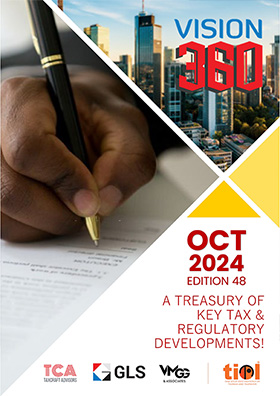I-T - Whether if assessee has invested Rs 50 lakh each in two different FYs, within a period of six months from date of transfer of capital asset, Sec 54EC benefit is to be allowed only for year in which transaction was made - NO: HC
By TIOL News Service
CHENNAI, DEC 31, 2014: THE issue before the Bench is - Whether in case an assessee has invested a sum of Rs.50,00,000/- each in two different financial years, within a period of six months from the date of transfer of the capital asset, the benefit of exemption u/s 54EC is to be allowed only for the year in which the transaction was made - NO is the answer.
Facts of the case
The assessee company, engaged in the business of manufacturing engineering components and offering engineering consultancy. After obtaining the copies of returns of income and other relevant documents, it was noticed that the assessee sold the land and building of Hyderabad Unit for a total consideration of Rs.1,75,00,000/-. The assessee claimed to had sold the land component at Hyderabad for Rs.1,13,74,000/- and after adjusting the indexed cost of acquisition, the total LTCG was calculated at Rs.1,09,98,256/-, of which Rs.1,00,00,000/- was claimed as deduction u/s 54EC, by investing Rs.50 Lakhs in REC Bonds on 31.3.2009 and another Rs.50 Lakhs in REC Bonds on 31.4.2009 (sic.). However, AO restricted the deduction to Rs.50 Lakhs by stating that the intention of the legislature was to limit the investment in long term specified asset to Rs.50 Lakhs only, by placing reliance on the decision of this Court in Areva T&D India Ltd. v. Assistant Commissioner, 2008-TIOL-505-HC-MAD-IT. On appeal, CIT(A) had confirmed the order of AO. On further appeal, Tribunal held that the exemption granted under proviso to Section 54EC(1) should be construed not transaction-wise, but FY-wise. It further held that if an assessee was able to invest a sum of Rs.50,00,000/- each in two different financial years, within a period of six months from the date of transfer of the capital asset, it cannot be said to be inadmissible. Accordingly, the Tribunal allowed the appeal filed by the assessee.
Having heard the parties, the High Court held that,
++ the issue involved in this appeal is no longer res integra in view of the decision of this Court in CIT v. C.Jaichander and another 2014-TIOL-1904-HC-MAD-IT, to which one of us - R.Sudhakar,J. is a party). In the said decision, HC held that the key issue that arises for consideration is whether the first proviso to Section 54EC(1) would restrict the benefit of investment of capital gains in bonds to that financial year during which the property was sold or it applies to any financial year during the six months period. On a plain reading of the above said provision, we are of the view that Section 54EC(1) restricts the time limit for the period of investment after the property has been sold to six months. There is no cap on the investment to be made in bonds. The first proviso to Section 54EC(1) specifies the quantum of investment and it states that the investment so made on or after 1.4.2007 in the long-term specified asset by an assessee during any financial year does not exceed fifty lakh rupees. In other words, as per the mandate of Section 54EC(1), the time limit for investment is six months and the benefit that flows from the first proviso is that if the assessee makes the investment of Rs.50,00,000/- in any financial year, it would have the benefit of Section 54EC(1). The legislature noticing the ambiguity in the above said provision, by Finance (No.2) Act, 2014, with effect from 1.4.2015, inserted after the existing proviso to sub-section (1) of Section 54EC, a second proviso, as per which it was provided further that the investment made by an assessee in the long-term specified asset, from capital gains arising from transfer of one or more original assets, during the financial year in which the original asset or assets are transferred and in the subsequent financial year does not exceed fifty lakh rupees;
++ the decision of this Court in Areva T and D India Ltd. v. Assistant Commissioner of Income tax,- 2008-TIOL-505-HC-MAD-IT, relied upon by the Senior Standing Counsel for the appellant is not applicable to the facts of the present case, as in the said decision the writ petitions filed "for issuance of writ of declaration declaring that the conditions occurring in Notification No. 380 of 2006 F. No. 142/09/ 2006-TPL, dated December 22, 2006, along with the words 'subject to the following conditions, namely,' issued by the Central Board of Direct Taxes are ultra vires Section 54EC, and arbitrary and violative of Articles 14 and 265 of the Constitution of India and consequently unenforceable", were dismissed as infructuous taking note of the subsequent amendment to Section 54EC of the Act, incorporating the limit on amount of investment in bonds in the section itself. For the reasons aforesaid, we do not find any question of law, much less substantial question of law that arises for our consideration in this appeal. Accordingly, this appeal is dismissed. No costs.
(See 2014-TIOL-2424-HC-MAD-IT)














